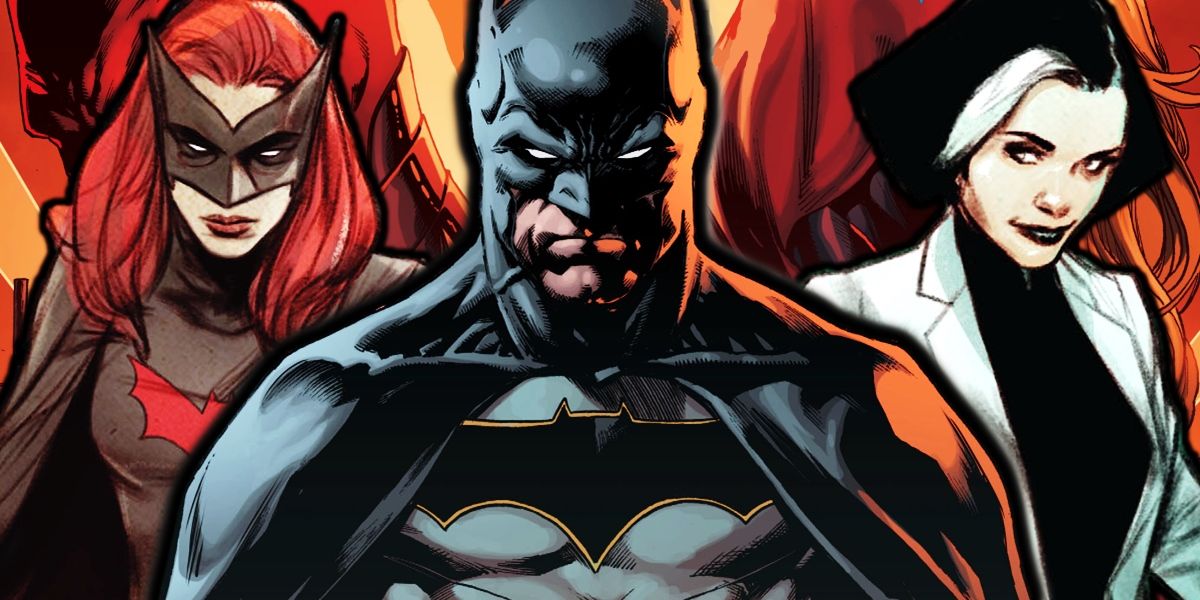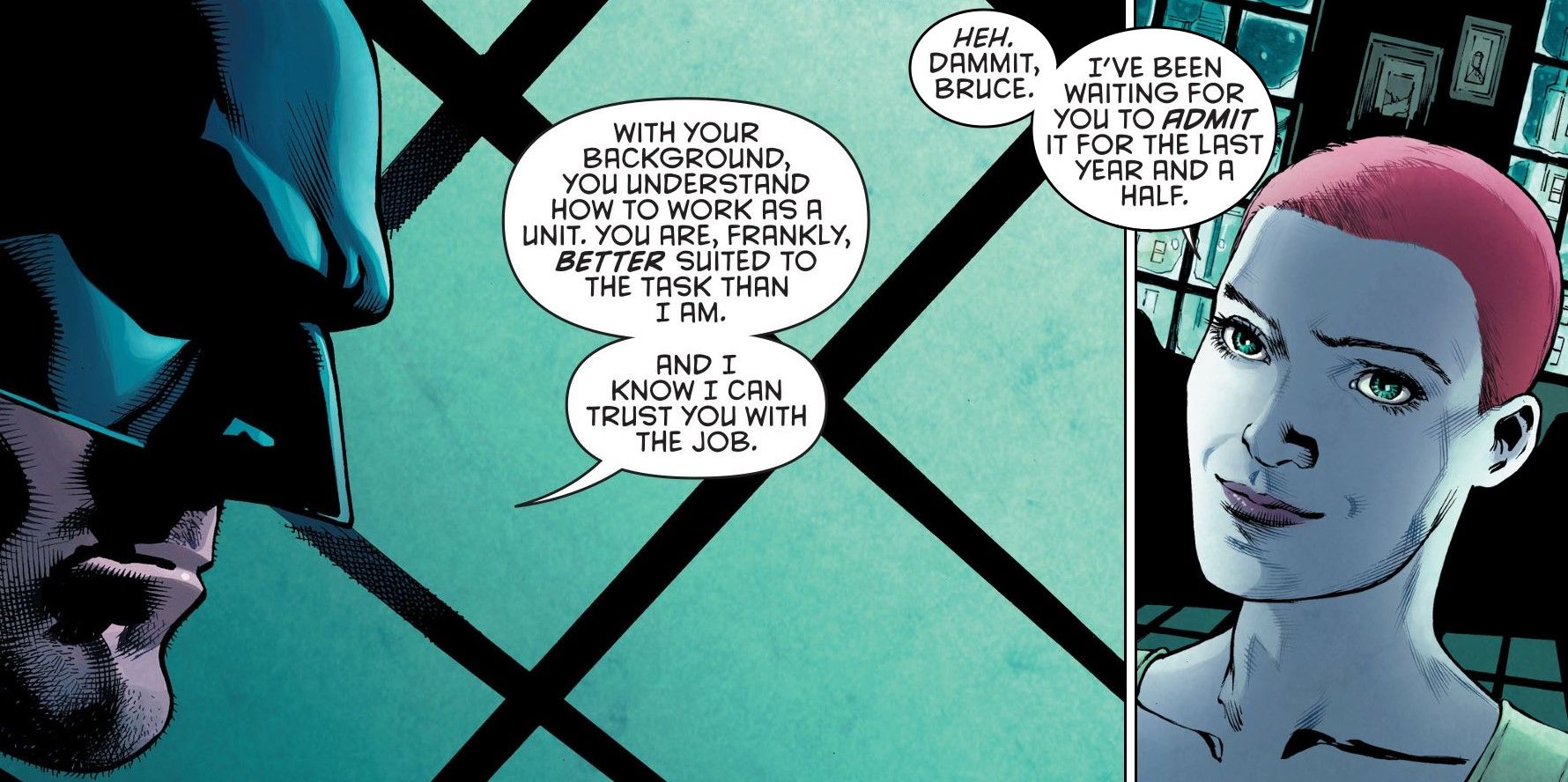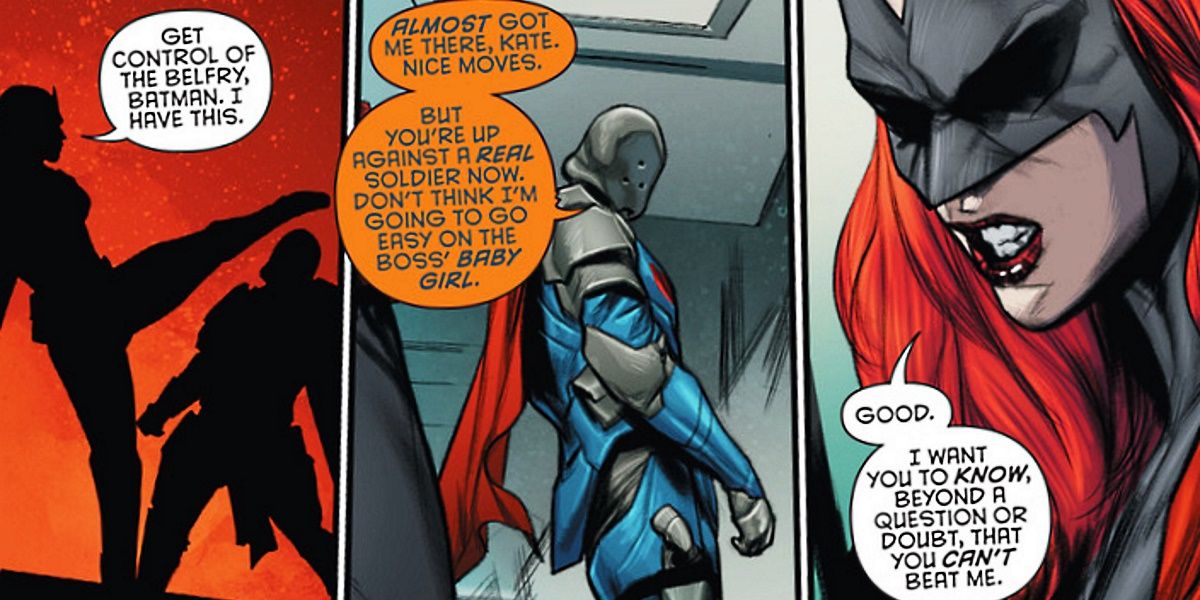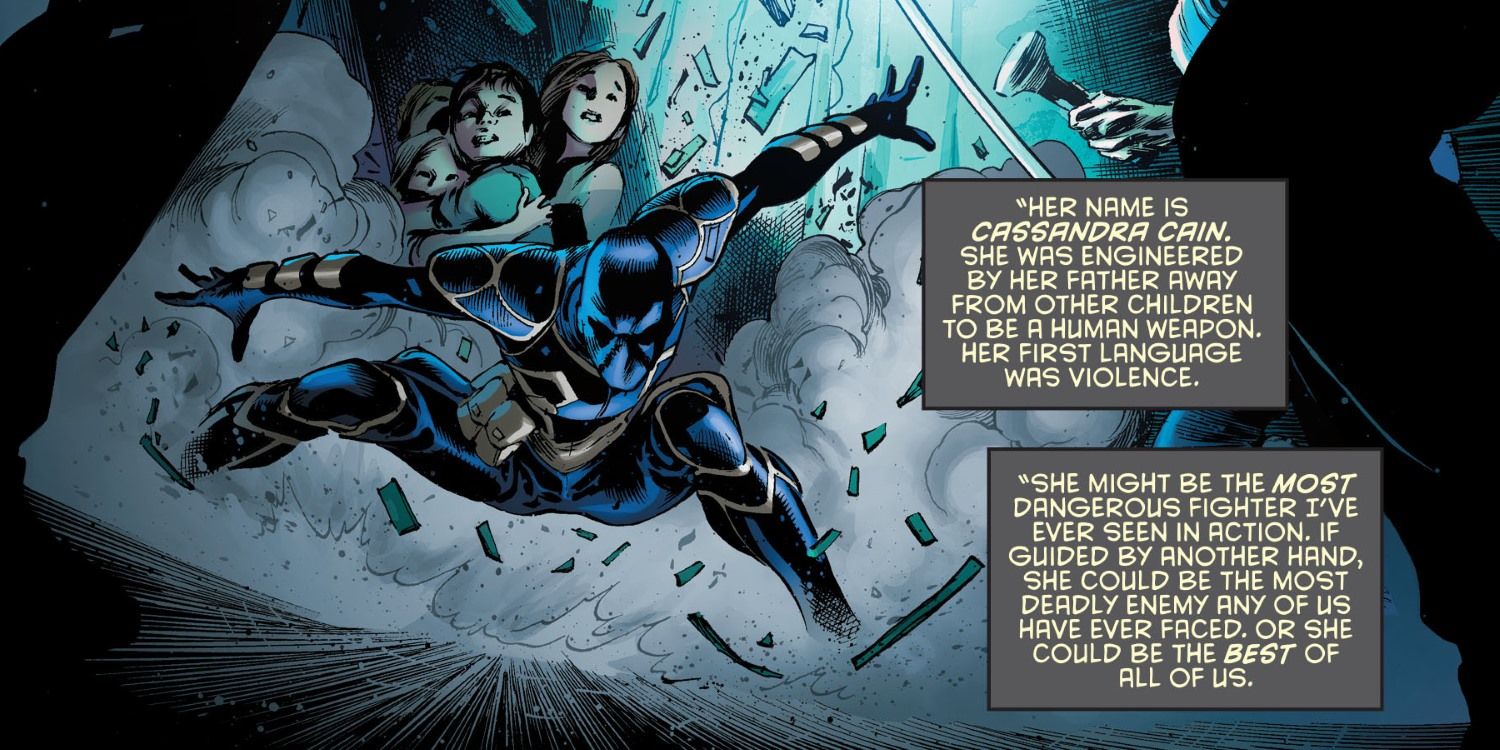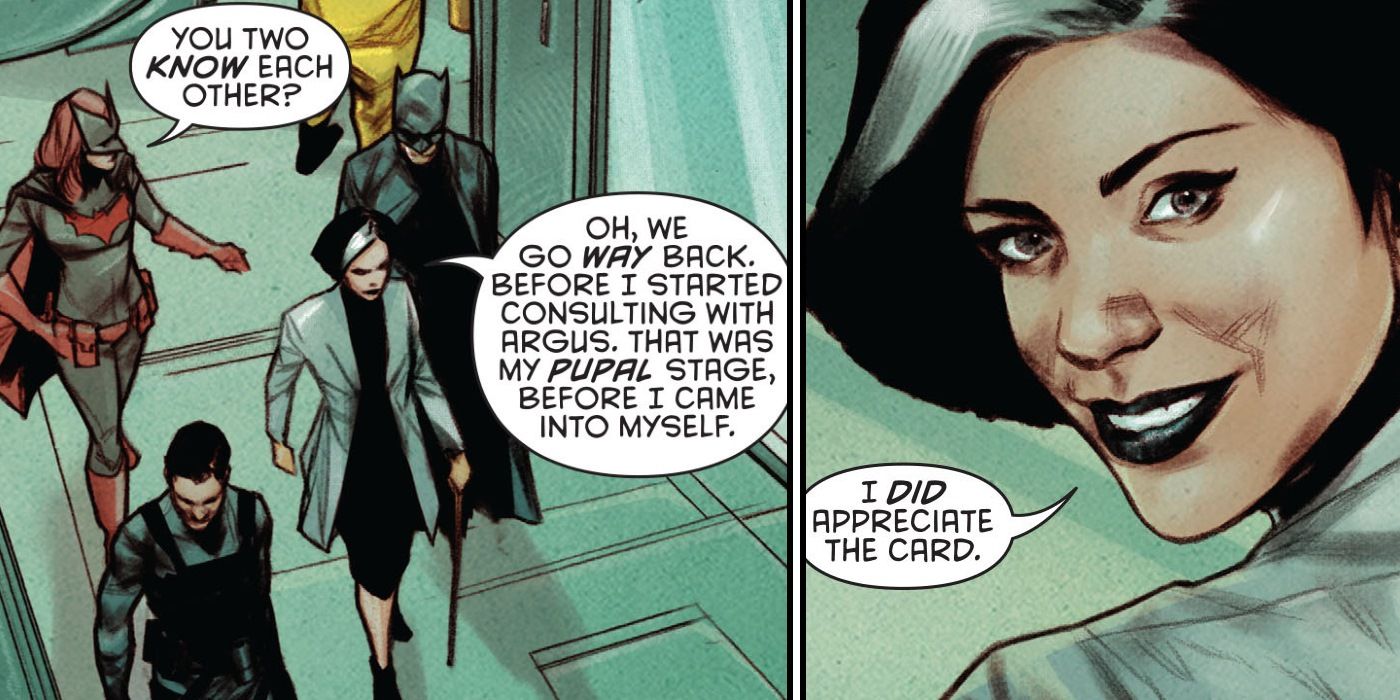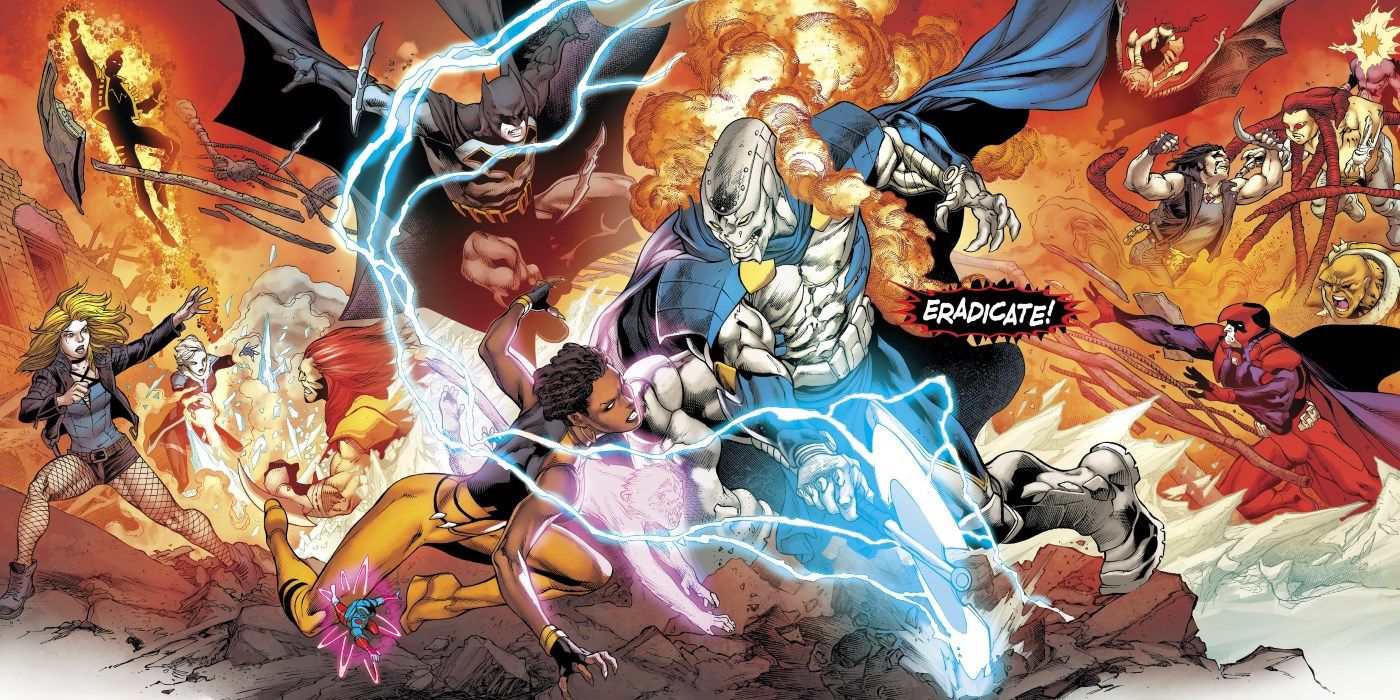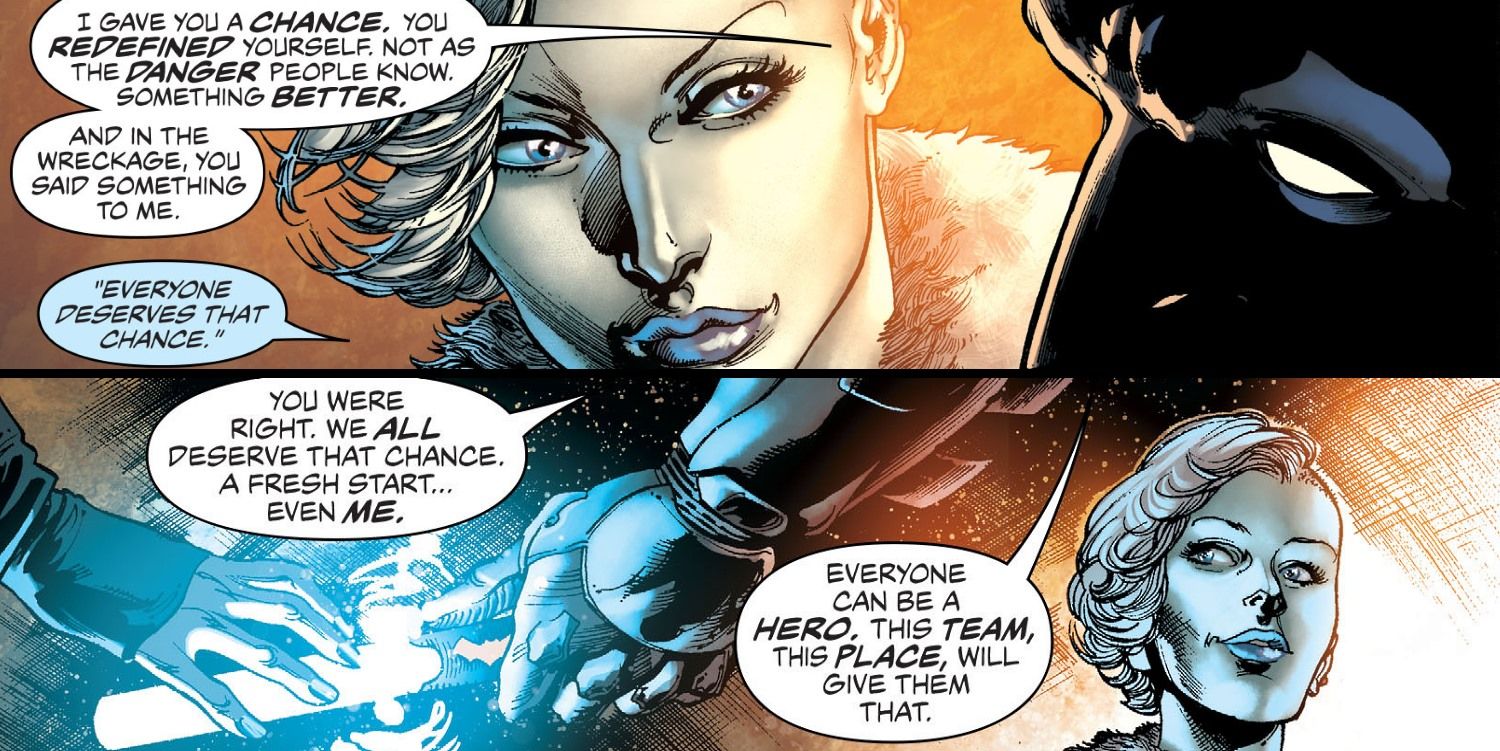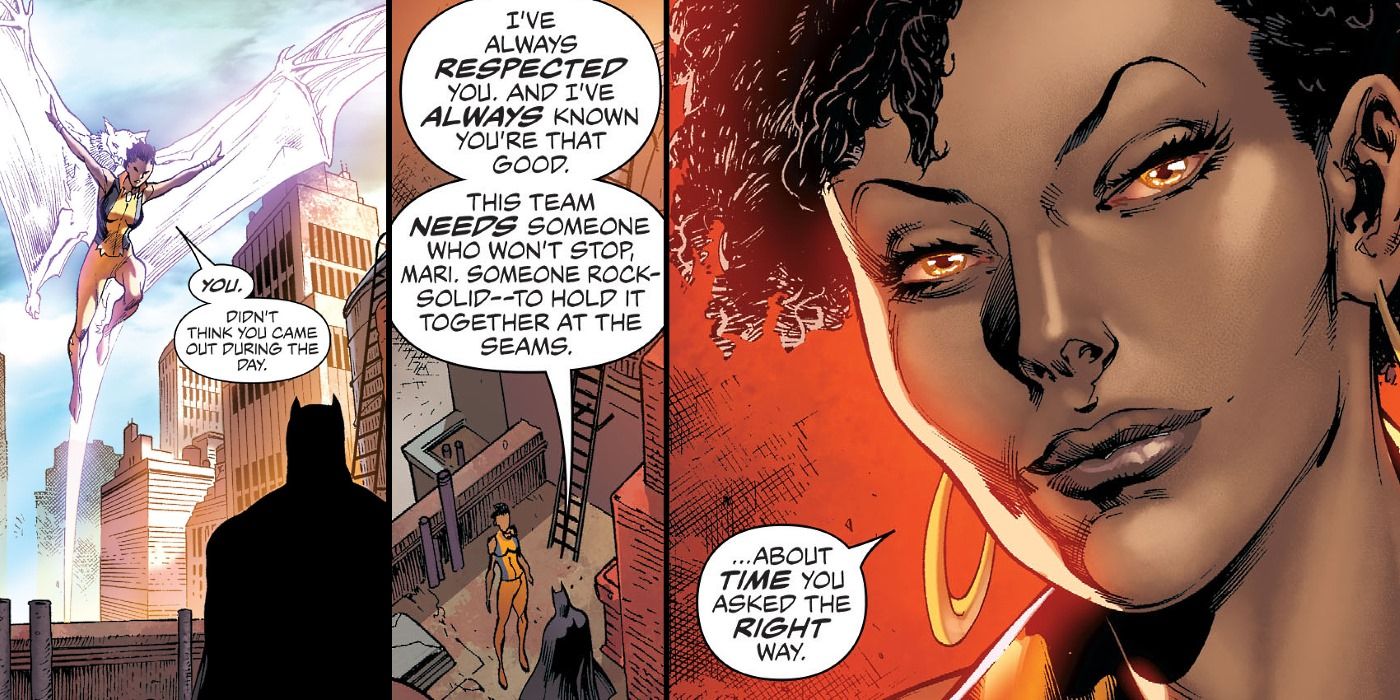They say that nobody's perfect, and it's also true of costumed superheroes. No matter how powerful, how invincible, or how alien to humanity a superhero may be, there is almost always something that they wish they could change about themselves - and if they can't think of anything, readers certainly can. A hero like Superman is too trusting to see bad things coming, but a hero like Batman can swing too far in the opposite direction, pushing away his closest friends if they fail to see things his way, or be willing to follow him to extremes. But in the age of the DC Rebirth, Batman is setting out to change something that should resonate with comic readers even more than his paranoia or cynicism.
He may not best known for giving compliments or words of encouragement to any but those he trusts most, but the new Bruce Wayne has established a pattern. Or, rather, the DC writers providing him with a new voice in the "Rebirth" era have. As calls for diversity encourage and praise new characters representing previously overlooked or undervalued audiences, Batman is taking a -fittingly - subtler approach. In his own book, his team-up Detective Comics, and even the formation of his new Justice League of America, Batman is recruiting a select few to defend humanity like never before. And in the process, he's looking past their imperfections, their race, their sexuality, and their gender.
The conclusion is hard to miss: Batman is as staunch a feminist as they come. And instead of talking about it, DC is showing it as the smartest way forward.
Batwoman: The Leader He Never Can Be
To illustrate our point, one need look no farther than Detective Comics, a series entrusted to write James Tynion IV following the DC Rebirth relaunch that gave the hero, and the book, a new purpose. When a series of strange, stealth drones began to follow and document the movements and combat of his current and former allies, Bruce Wayne made his conclusion: something is coming, and when it arrives, everyone close to him will be targeted. The answer seemed obvious: if a threat faces them all, then they face it together. Not just en masse, but as a unit, a team, organized and trained to function with more efficiency and effectiveness than the sum of their parts. And that's a job he couldn't do himself.
Recognizing that he's a lone wolf at heart meant recognizing that there are tasks he is not designed for. And in the case of uniting and drilling a team of independent thinkers and fighters with military precision, his cousin Kate Kane - better known as Batwoman - was the best person for the job. Of all the heroes he could trust, at least. In another writers' hands, in another time, or with a more transparent purpose, Batman handing control of his entire network of former sidekicks to a woman better suited to the job could be taken as pandering... because it could also be presented that way. But not here, and that's thanks to the faithfulness of the story to the characters themselves.
It may shock some lapsed fans who feel they know all there is to know about Batwoman, but simply put, this is a job for Kate, not Bruce. No matter how you measure it, Kate possessed precision and an awareness of leadership that Batman doesn't, considering that she was at one point destined to lead armed forces into combat. And the question has to be asked, of who is more determined: the man who chooses a life of vigilance because he has no reason to live, or the woman who chooses that same life freely? In simpler terms, who is the better spy: the one who sees all from the shadows, or the one who sees them?
It's this kind of feminist thinking that, arguably, can work most effectively in mass media. The story values the skills Kate possesses, so both she and Bruce appear smarter as a result of them both recognizing the fact. It's Tynion (and in the two-part Batwoman prologue, Marguerite Bennett) who recognizes that a message is most effective when it's honest, obvious, and true in the text itself. When the Belfry is attacked by the new enemy organization's top agent, Colony Prime, Kate and Bruce leap into attack mode. When Colony Prime turns the Belfry's defense systems against the heroes, they're faced with two different problems.
Without hesitation, Kate claims she "has this." She knows she's right, having trained at the side of Prime's commanding officer. Bruce knows she's right for the same reasons. And as Kate makes him bleed, Bruce attacks a keyboard to counteract the tech invasion. To the average reader, it's an unremarkable scene on its own. And that's what makes it so powerful. Batman and Batwoman are equals, in the fiction of the story and universe. By embracing that idea - that in the world of Batman, skill and discipline rule - and illustrating it in the most obvious, interesting, empowering, and prejudice-ignoring fashion makes it both entertaining and progressive.
And as Kate completely dismantles her opponent, the writers skirt playfully close to the gender statement being made in the margins, with Kate explaining why she prevailed: her opponent was forged by men... "I was forged by fire."
Cassandra Cain: The Best of Them All
Of all the Batman Family members brought back into the spotlight by Tynion's new Detective structure, Cassandra Cain is almost certainly the most underrated in recent years. That trend is almost certainly over for the foreseeable future, as Tynion's characterization has clearly illustrated the story potential she carries with her. It isn't just that Batman openly states that she is among the deadliest and dangerous individual fighters Batman has ever laid eyes on - that part makes sense, considering she was raised by a world-famous assassin, and born of another. It's Bruce's recognition of the trauma Cassandra overcomes with every breath she actually spends functioning.
We won't go too deep into detail with the character (that's what Google is for), but suffice it to say that she endured physical and emotional trauma and abuse as a child that could, and likely would destroy most. But there's no stereotypical rise above it, either: Cassie still wears those marks in her inability to speak, to share human contact, or form any intimate or loving relationships. The trauma, however, never defines her, or renders her emotionally imbalanced when called upon to act. When dropped into an ambush of a dozen Colony guards in a Detective storyline, readers don't even see her defeat them, because it's a foregone conclusion.
It should be obvious why Cassandra Can should act as a role model to plenty of people, not just women. But again, in Batman's eyes, her gender never enters the equation. He measures the facts: Cassandra's survival is what shows her strengths, and if she chooses to, can become a better hero than anyone else they call an ally.
A Supporter of Transgender Women
The gentle, subtly, but completely purposeful hand of Tynion and Bennett is perhaps best encapsulated into their introduction of a transgender character into the Batman Universe. A move that sends a clear message as far as readers carry it, seeing themselves acknowledged where mass media tends to ignore their existence... of course, that's if a reader even notices it. In our initial coverage of the introduction of Dr. Victoria October as a potential player in the Batwoman series, the fact that she was transgender never even arose, since it's neither stated in, nor relevant to the story.
But the subtlety of the scene, the extent to which Victoria's gender is not even worth commenting on is driven home with a bit of comedy. When Batwoman questions the familiarity between Victoria and Bruce, the former confirms that their collaborations go way back, before she was even able to act as a source employed with A.R.G.U.S.. With a reference to being in her "pupal stage" then, those familiar with the transgender community or experience recognize that she had not yet transitioned. A process of self realization that, upon completion, Bruce had sent a card of congratulations - as Batman.
Had Tynion and Bennett shouted in the text about Dr. October's gender, it would certainly have gained more attention. But the message isn't for everyone, as evidenced by the use of actual language that would be commonplace an uniquely meaningful for those being acknowledged. Considering how hard that trick is to pull off elsewhere, it's an elegant way of implying equality among all women (accented by the subtle note of Bruce and Victoria sharing a past even Kate is not privy to). And most of all, critics would have a hard time arguing that Bruce Wayne would oppose the idea of a person unlocking their truest self, and gaining peace by integrating their warring halves - something even he has yet to achieve.
The Recruitment of His Justice League
It's still early days in Batman's formation of DC's new Justice League of America, but the "Rebirth" issue alone showed that Batman's appreciation for talent and merit, ignorant of gender, extends beyond his own comic lines. DC publicized the variety of figures who would be recruited to this new team, specifically designed to send a message to all people that heroes are human, and they can be (a sound reason to select a diverse group). The result was a roster of Vixen, Lobo, Black Canary, The Atom, Killer Frost, and The Ray. In total, a group containing men, women, Korean-Americans, African-Americans, vigilantes, reformed villains, and LGBTQ members.
Readers don't yet know to see exactly why this particular roster was selected for writer Steve Orlando's run, though their individual Rebirth issues showed each were much, much more than shows at first glance. But there was something interesting that we noticed in Justice League of America: Rebirth #1, and given the larger decisions being made by Batman in this post-Rebirth era, it makes perfect sense. Six members in total are recruited in total - but it's only the women that Batman invites to the team personally. And by "invites," we mean gives a heartfelt explanation of why they matter more than the respect and value being given to them by others.
Caitlin Snow first demonstrates her heroism by sacrificing her life (seen during the Justice League vs. Suicide Squad event), thereby inspiring Batman to create a more, well, inspiring League. After demanding her freedom from Amanda Waller, Batman escorts her personally to the League's new headquarters, explaining that it was her willingness and ability to redefine herself despite what others thought of her that cemented his plan. He would recruit others he believed could do the same, and begins by sending Snow to recruit the vigilante called Black Canary.
The recruitment mission is a chance to see Killer Frost and Black Canary take eachother on with matched powers and punches, but Batman soon reveals that he has come in person to convince Dinah Drake that she's a fit for this new Justice League. In his own words, "You work hard. You say what you mean. And you don't care who disagrees. I need that." Essentially, it's Dinah's tendency to be unapologetically honest and uncompromising in what she feels is right and just - seen as aggressive, or perhaps emotional by others - that allows her to act as the team's conscience.
From there, he sends Canary to collect Lobo, who owes Batman and will be joining the team to repay a debt. He then heads to Ivy University to recruit Ray Palmer, The Atom, but finds only his teaching aid Ryan Choi. He chooses to leave, but it's Lobo who sees potential in the kid and brings him along. And as Bruce sends Ryan to pass on the invitation to Ray Terrill for... unknown reasons so far, he heads to Manhattan to make yet another plea to one of the most influential women in DC's entertainment world.
The paparazzi may think that Mari McCabe's shift from fashion and charity work as a New York celebrity and icon to the role of Vixen - made possible through a totem passed onto her by her parents when she was a child in Africa - is fun and games. But Batman knows better, and while the reader isn't allowed to see their past together, their exchange reveals that Mari isn't just welcome on the team, she is the team. That is, if she isn't willing to join in a leadership role, and give it an unstoppable, unyielding, and unrelenting example to follow, then it can't succeed. And when Batman informs her flat out that "There is no team without you," Mari accepts.
It's not a slight against the men on the team, per se, since each has their established fans already. But it does seem a distinct effort to give these women of DC - ones largely neutered or made to be victims in The CW's Arrowverse - their due. After all, comic book readers know that Killer Frost, Black Canary, and Vixen have more attitude, personality, courage, and story potential fit for the spotlight then plenty who have had it. And when it's Batman making that argument on their behalf in the stories themselves, it leads to a far more satisfying story. Go figure.
-
There's something to be said for the idea that the DC Rebirth as a whole is being designed by a variety of contemporary, distinct voices, and is more modern-minded or forward-thinking as a result. After all, Lois Lane has been shown to be as brutal as Batman, if the situation demands it. And oh yeah, Harley Quinn has given Superman his most severe beating in recent memory. But whatever the cause for the swell in female equality, and womanly strength in all its forms, Batman stands at the tip of the spear.

